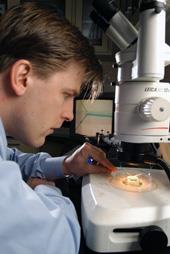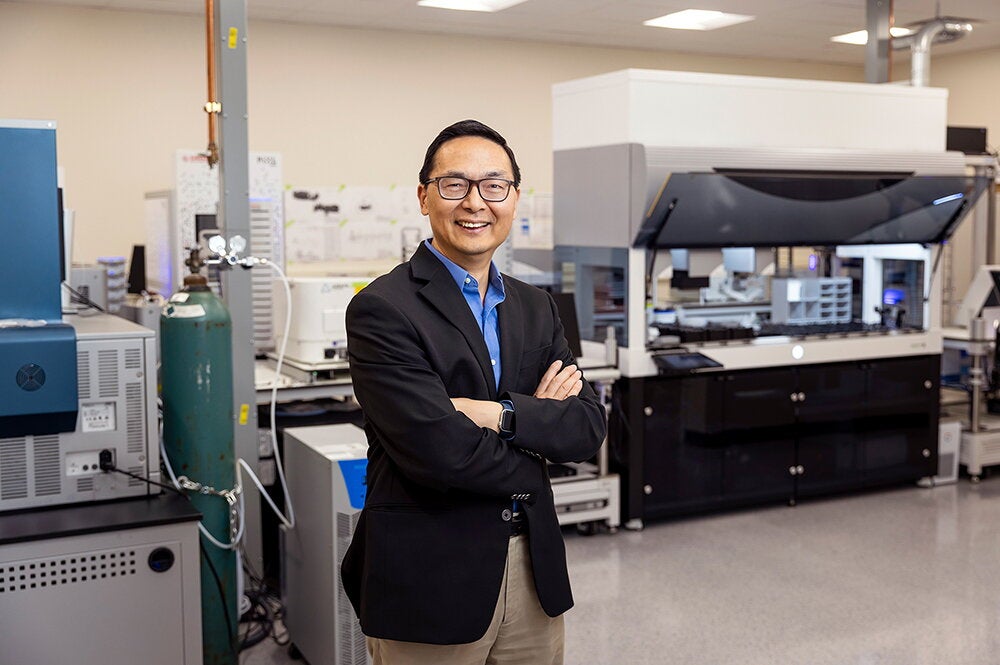

Fuel cells powered the space program to the Moon, but the quest continues to make fuel cells more economical and practical for Earth-bound uses. University of Illinois researchers have nudged the technology farther down that path with a small, innovative, new fuel cell that "breathes" air and boosts power levels.
Fuel cells convert the chemical energy of hydrogen and oxygen to produce water, electricity, and heat. They have the potential to become a major source of power for electronic devices, such as laptops, because they last much longer than batteries. Longer-lasting power would come as a welcome relief to any laptop user who has lost hours' worth of work when the battery died and the screen went blank.
"Think of laptops now. After three and a half hours, they die," says Paul Kenis, professor of chemical and biomolecular engineering in the College of Liberal Arts and Sciences. "Fuel cells will be able to achieve a life that is longer by a factor of five, probably more down the line."
However, fuel cell technologies still face obstacles, which is where the U. of I. research comes into the picture.
In 2001, U. of I. fuel cell work led to the creation of the startup company INI Power Systems, Inc., led by Larry Markoski, formerly at the U of I's Beckman Institute. In collaboration with INI Power Systems, the U. of I. developed an innovative design that eliminated the fuel cell membrane-the physical barrier separating the fuel from its oxidant.
According to Kenis, "membraneless" fuel cells have fewer parts and a simpler design than fuel cells with membranes. In addition, they are compatible with alkaline chemistry, while most fuel cells with membranes are not.
Just as alkaline batteries outperform acidic batteries, Kenis says alkaline fuel cells outperform acidic fuel cells. Also, any carbonates produced can be removed with ease in the membraneless design. Carbonates often clog the membrane of a more conventional fuel cell.
To make it possible for a fuel cell to operate without a membrane, Kenis' team has taken the cell down to small dimensions.
As he explains, "Fluids flowing through channels of microscale dimensions behave differently than fluids flowing through the much larger pipes found in home plumbing systems. At the microscale, there is no turbulence."
What this means is that at the microscale, two streams of fluids can flow side by side in the fuel cell with very little mixing. Therefore, no barrier-or membrane-is needed to separate them in a very small fuel cell.
Kenis also pointed out that in the earlier fuel cell designs, dissolved oxygen was fed into the fuel cell in liquid form. But the fuel cell wasn't getting enough oxygen from the water. So they devised a new system in which oxygen from the air, rather than from water, diffuses into the fuel cell.
"Oxygen in air diffuses much faster than oxygen in liquid," Kenis says. As a result of the new design, greater amounts of oxygen replenish the system and more power is generated.
In fact, in a matter of months, the new "air-breathing" design has increased the fuel cell's power density by 20 times.


